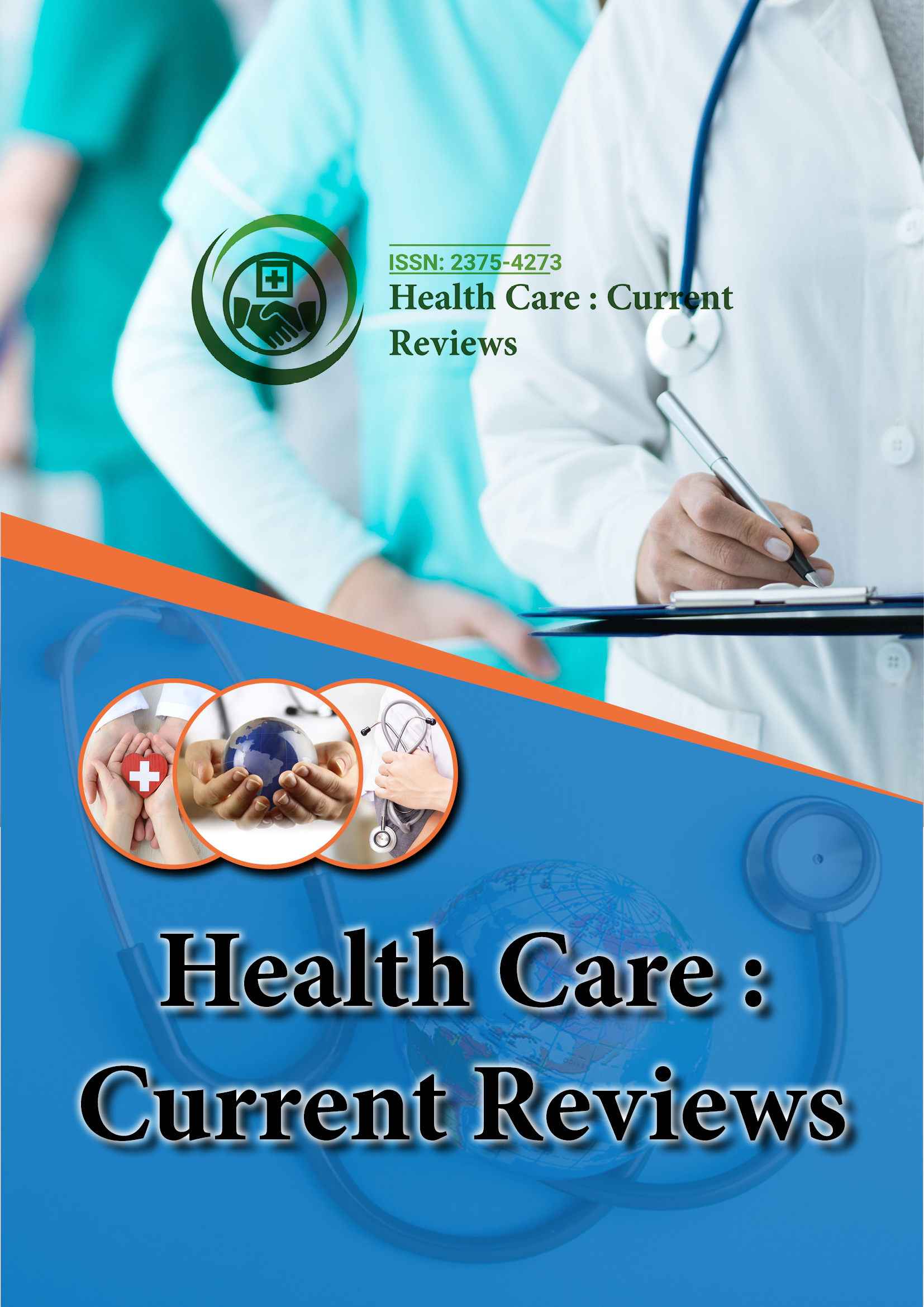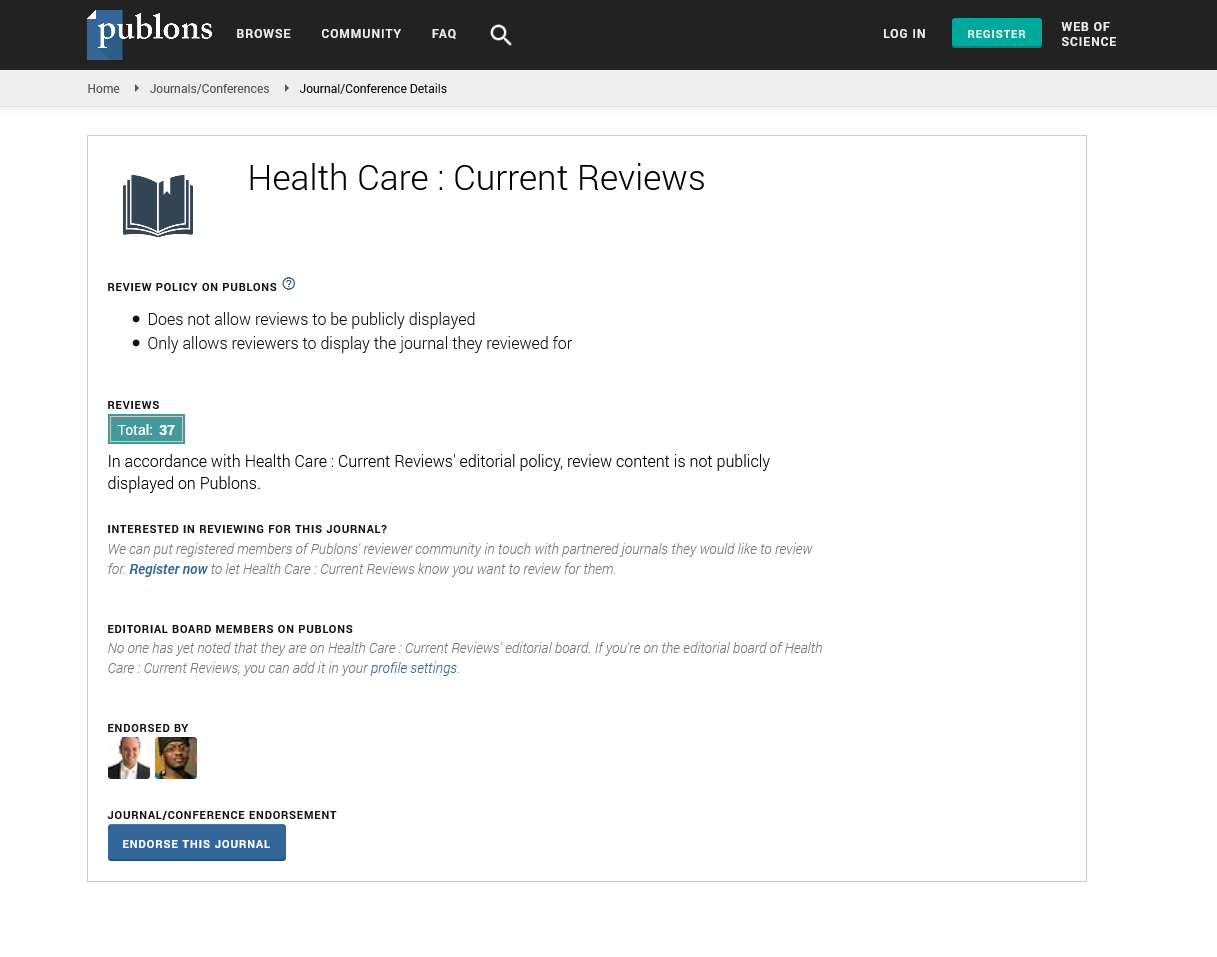PMC/PubMed Indexed Articles
Indexed In
- Open J Gate
- Academic Keys
- RefSeek
- Hamdard University
- EBSCO A-Z
- Publons
- Geneva Foundation for Medical Education and Research
- Google Scholar
Useful Links
Share This Page
Journal Flyer

Open Access Journals
- Agri and Aquaculture
- Biochemistry
- Bioinformatics & Systems Biology
- Business & Management
- Chemistry
- Clinical Sciences
- Engineering
- Food & Nutrition
- General Science
- Genetics & Molecular Biology
- Immunology & Microbiology
- Medical Sciences
- Neuroscience & Psychology
- Nursing & Health Care
- Pharmaceutical Sciences
Commentry - (2024) Volume 12, Issue 4
The Evolution of Healthcare Delivery: From Hospitals to Home Care
Michael Johnson*Received: 29-Nov-2024, Manuscript No. HCCR-24-28133 ; Editor assigned: 02-Dec-2024, Pre QC No. HCCR-24-28133 (PQ); Reviewed: 16-Dec-2024, QC No. HCCR-24-28133 ; Revised: 23-Dec-2024, Manuscript No. HCCR-24-28133 (R); Published: 30-Dec-2024, DOI: 10.35248/2375-4273.24.12.418
Description
The healthcare landscape has undergone significant changes over the past few decades driven by technological advancements evolving patient needs and a shift in healthcare delivery models. One of the most notable transformations has been the movement from traditional hospital-centered care to an emphasis on home care. This evolution is reshaping how healthcare is provided improving patient experiences and offering greater convenience cost-effectiveness and efficiency in the healthcare system. However the increasing pressure on hospital systems coupled with advancements in medical technologies has prompted a shift toward outpatient and homebased care. One of the primary drivers of this change is the rising demand for patient-centered care. Patients today are more involved in decisions about their own healthcare and many prefer to receive care in the comfort and privacy of their own homes. This trend has led to the development of various models of home care including home health services telemedicine and remote monitoring. Home health services which include nursing care physical therapy and assistance with daily activities have become an essential part of healthcare delivery. These services are particularly important for elderly patients or individuals with chronic conditions who need ongoing support but do not require the intensive care provided in a hospital setting. The ability to receive care at home reduces the risk of hospital acquired infections enhances recovery times and lowers healthcare costs.
Furthermore, home care allows patients to remain in a familiar environment which can have a positive impact on their mental and emotional well-being. Telemedicine is another key aspect of the shift towards home-based care. With the advent of video conferencing and secure online platforms patients can now consult with healthcare providers remotely reducing the need for in-person visits. Telemedicine has proven particularly beneficial for patients in rural or underserved areas where access to healthcare facilities may be limited. It has also become a central tool during the COVID-19 pandemic allowing healthcare providers to continue treating patients while minimizing the risk of exposure to the virus. Beyond its role in crisis situations telemedicine has become a mainstream service providing ongoing access to medical advice monitoring of chronic conditions and mental health counseling. Remote Patient Monitoring (RPM) is another important component of the transition to home care. This technology allows healthcare providers to track patients’ vital signs such as heart rate blood pressure and glucose levels in real time even when the patient is at home. Through wearable devices or home-based equipment patients can send their data to healthcare providers who can make informed decisions about their treatment plans.
RPM is particularly beneficial for individuals with chronic illnesses such as diabetes or heart disease as it enables timely interventions before conditions worsen. This proactive approach to healthcare helps prevent hospital readmissions and improves long-term health outcomes. In addition to these technological advancements the shift toward home care has been influenced by changes in healthcare policies and reimbursement structures. Many health insurance providers now offer coverage for home healthcare services recognizing the cost-saving potential of home care compared to hospital stops.
Citation: Johnson M (2024). The Evolution of Healthcare Delivery: From Hospitals to Home Care. Health Care Curr Rev. 12:418.
Copyright: © 2024 Johnson M. This is an open access article distributed under the terms of the Creative Commons Attribution License, which permits unrestricted use, distribution, and reproduction in any medium, provided the original author and source are credited

